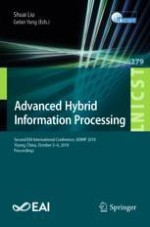This book constitutes the refereed proceedings of the Second EAI International Conference on Advanced Hybrid Information Processing, ADHIP 2018, held in Yiyang, China, in October 2018. The 71 papers presented were selected from 228 submissions and focus on hybrid big data processing. Since information processing has acted as an important research domain in science and technology today, it is the right time to develop deeper and wider use of hybrid information processing, especially information processing for big data. There are more remaining issues waiting for solving, such as classification and systemization of big data, objective tracking and behavior understanding in big multimedia data, encoding and compression of big data.
